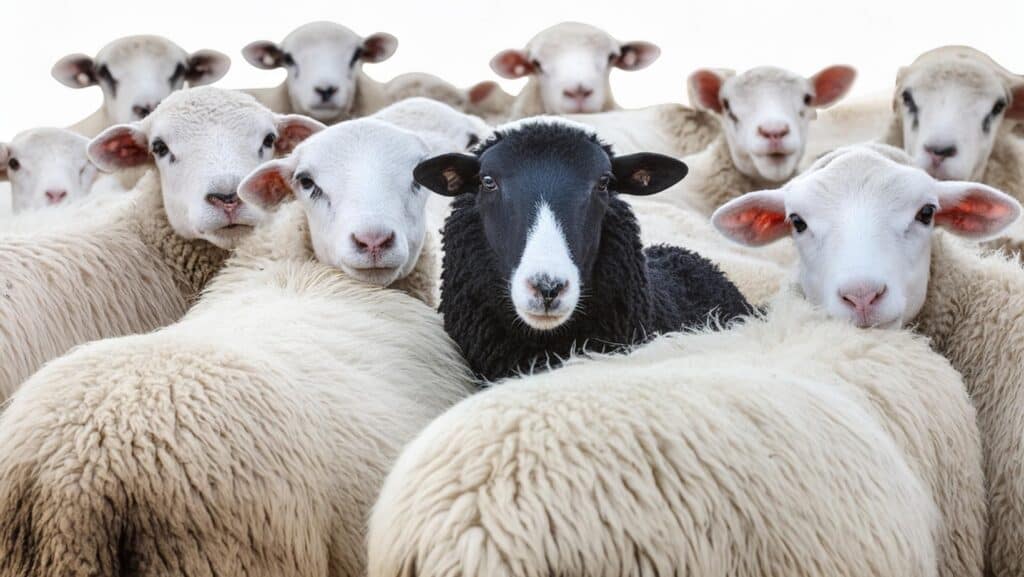What Is Cognitive Shuffling? The Simple Sleep Trick to Calm a Racing Mind
If you’ve ever found yourself lying in bed, exhausted but wide awake, replaying every awkward conversation you’ve had since middle school, you’re not alone—and you’re definitely not broken. The modern mind has a hard time letting go, especially at night when the world gets quiet, and your brain suddenly thinks it’s showtime. That’s where cognitive shuffling comes in: a surprisingly simple sleep trick that gently nudges your brain away from racing thoughts and into a more dreamlike, drowsy state.
Science Backed

Developed by a cognitive scientist, this quirky method doesn’t involve breathing exercises, mantras, or medication. It’s about distracting your mind just enough with harmless, random images—think giraffes, jellybeans, and garden hoses—to help you drift off naturally. Ready to try the mental equivalent of turning your brain into a lava lamp? Let’s get into it.
Slide 1: What in the World Is Cognitive Shuffling?

Cognitive shuffling might sound like a mental card trick—and in some ways, it is. But instead of dealing aces, you’re dealing random thoughts. This quirky technique was developed by cognitive scientist Dr. Luc Beaudoin to help people fall asleep faster by essentially “bored-ing” the brain into sleep. Think of it as mental white noise: you’re distracting your mind from overthinking by feeding it a stream of meaningless but soothing images.
Slide 2: Why We Can’t Sleep—It’s the Thoughts

You know how it goes: you’re exhausted, tucked in, the room is dark, and suddenly your brain is doing a TED Talk about that awkward thing you said in 2009. For many people, the biggest barrier to sleep isn’t discomfort or noise—it’s racing thoughts. And cognitive shuffling is a simple, no-tech, drug-free way to outsmart that overactive mental chatter.
Slide 3: The Science Behind the Shuffle

Dr. Beaudoin’s approach was inspired by the idea that the brain needs a break from structured, meaningful thought to transition into sleep. During the day, your mind loves logic and planning. But at night, logic keeps you too alert. Cognitive shuffling works by interrupting your usual patterns of thought, nudging your brain into a sleep-friendly state similar to what it experiences right before dreaming.
Slide 4: So, How Does It Work?

Here’s the gist: you pick a random word—let’s say, “table.” Then you slowly imagine objects that start with each letter of the word. For “T,” you might picture a tiger. For “A,” maybe an apple. “B” could be a balloon, and so on. You’re not making a story or solving a puzzle. You’re just picturing unrelated, pleasant things. It’s like giving your brain a pile of picture books instead of a dense novel.
Slide 5: What Makes It Different from Counting Sheep?

Counting sheep has a goal—it’s supposed to lull you with repetition. But your brain can still sneak in a worry or a stray thought between the imaginary sheep. Cognitive shuffling, on the other hand, keeps your working memory gently occupied with visual randomness. It’s hard to obsess over your to-do list while you’re visualizing a monkey, a marshmallow, and a moon.
Slide 6: A Peek into the Sleepy Brain App

Dr. Beaudoin even created an app called mySleepButton, which does the cognitive shuffling for you. It audibly reads out a series of random words, encouraging you to visualize each one as it comes. It’s like story time for grown-ups, minus the plot. While the app isn’t essential, it can help if you have trouble coming up with words on your own—or just want a nudge into sleepiness.
Slide 7: DIY Cognitive Shuffle—No App Required

You can do this technique without any tools. Just choose a common word, like “plant” or “house,” and go letter by letter. Visualize something that starts with each letter. Try not to overthink—let your imagination lead. If your mind wanders or you forget where you were, no big deal. That’s actually a good sign: you’re getting drowsy.
Slide 8: Real People, Real Results

Plenty of folks have stumbled across cognitive shuffling and found it surprisingly effective. It’s been shared on Reddit threads and sleep forums by people who say they’ve tried everything else—white noise machines, melatonin, meditation—and nothing worked until they started visualizing random objects like flamingos, forks, and frisbees. Sometimes weird really works.
Slide 9: Why It Might Be Especially Helpful for Anxious Minds

Cognitive shuffling is especially helpful for people whose anxiety loves to flare up at bedtime. Unlike meditation, which can feel like work for some, this method feels more like play. There’s no pressure to breathe a certain way or empty your mind completely. You’re just… gently entertaining your brain until it drifts off.
Slide 10: The Role of Imagery in Sleep Onset

Our brains naturally slip into imagery-based thinking just before sleep—kind of like a movie reel warming up before a dream. That’s why cognitive shuffling fits so well with how the mind prepares for sleep. Instead of resisting the mental drift, you’re guiding it with gentle, non-threatening images that aren’t linked to stressful thoughts.
Slide 11: A Few Tips for Maximum Effectiveness

To get the most out of cognitive shuffling, try these little adjustments:
- Keep it light: Choose fun, simple words like “cloud” or “happy.”
- Don’t analyze: If you start analyzing the objects or making a story, gently steer back.
- Be comfy: Make sure your environment is already sleep-friendly (cool, dark, quiet).
- Be patient: Like any new habit, it may take a few nights before you see big results.
Slide 12: It’s Free, It’s Harmless, and It Might Just Work

The beauty of cognitive shuffling? There are no side effects, no expensive equipment, and no need to get out of bed. It’s one of those rare sleep strategies that’s as gentle as it is effective. At worst, it’s a harmless way to pass the time while you wait for sleep. At best, it might be the last thing you remember before you drift off.
The Takeaway

Want more sleep strategies backed by science and real-life experience? Keep exploring, and don’t be afraid to try something unconventional. Sometimes, the weirdest ideas—like mentally shuffling through random objects—are the ones that finally get you to sleep.
Let me know if you’d like a version with images or if you want to include sources or expert quotes in the gallery!







